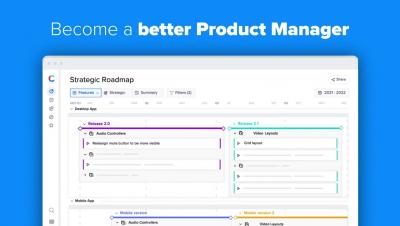Teams | Collaboration | Customer Service | Project Management
Craft
From Associate Product Manager to Chief Product Officer: A Quick Guide
First, congratulations. You’re investigating strategies to advance your career in product management, which means you’ve already found one of the most fulfilling and sought-after professions. Research cited by Career Karma found that the average product management professional rates their job satisfaction level at 3.7 out of 5 stars — “highly satisfied.” And Product Management made LinkedIn’s 2022 list of the Top 25 roles showing the most growth in demand.
How to Succeed in a Product Operations Role
So, you’re looking into a career in product operations. Smart move. Product Ops roles are quickly becoming must-haves in both large enterprises and growth companies beginning to scale. A May 2022 LinkedIn job search for “Product Operations manager” returned more than 7,000 open positions in the European Union, and 69,000 openings in the United States. In this post, we’ll discuss why the product ops profession has become so popular with businesses in all industries.
Craft.io - Great products start with great product management
Guru by Craft.io
4 Steps to Become a Product Led Organization
Most Software-as-a-Service (SaaS) applications operate on a free pricing model. Meaning it’s easy as pie to create a seamless and natural hands-free sales process. All a customer has to do is to sign up and they have full access to the product. This already shows a natural leaning toward a product-led approach. Why perform sales pitches when your product can do it for you?
Top 8 User Experience Monitoring Solutions
User Experience (UX) is vital for the success of SaaS products. It can make the difference between a product which is used once and then forgotten and a product that becomes an essential part of a user’s workflow. By understanding the challenges of SaaS design and why UX is so important, providers can give their products the best chance for success in this competitive market. According to Tech Jury, 74% of users are likely to come back if it has good mobile UX.
The 5 Steps to an Exceptional Product Management Workflow
A product manager’s responsibilities are vast and complex, with the individual tasks varying depending on the organization and the products.
The 5 Dimensions of Product Quality You Should Know
Developing and delivering the best quality products and services is the goal of any product manager worth their salt. And it is high-quality products that lead to sustainable growth and provide value over time. In contrast, poor products are likely to cost customers. Driving this sustainable growth that is vital for businesses to succeed in the long run ultimately comes down to quality. But, how can we measure quality? How much should we invest in quality improvement?
How to use OKRs and KPIs to optimize product development
Goal setting is critical for effective product development and management. Through setting goals you can establish a clear direction and









